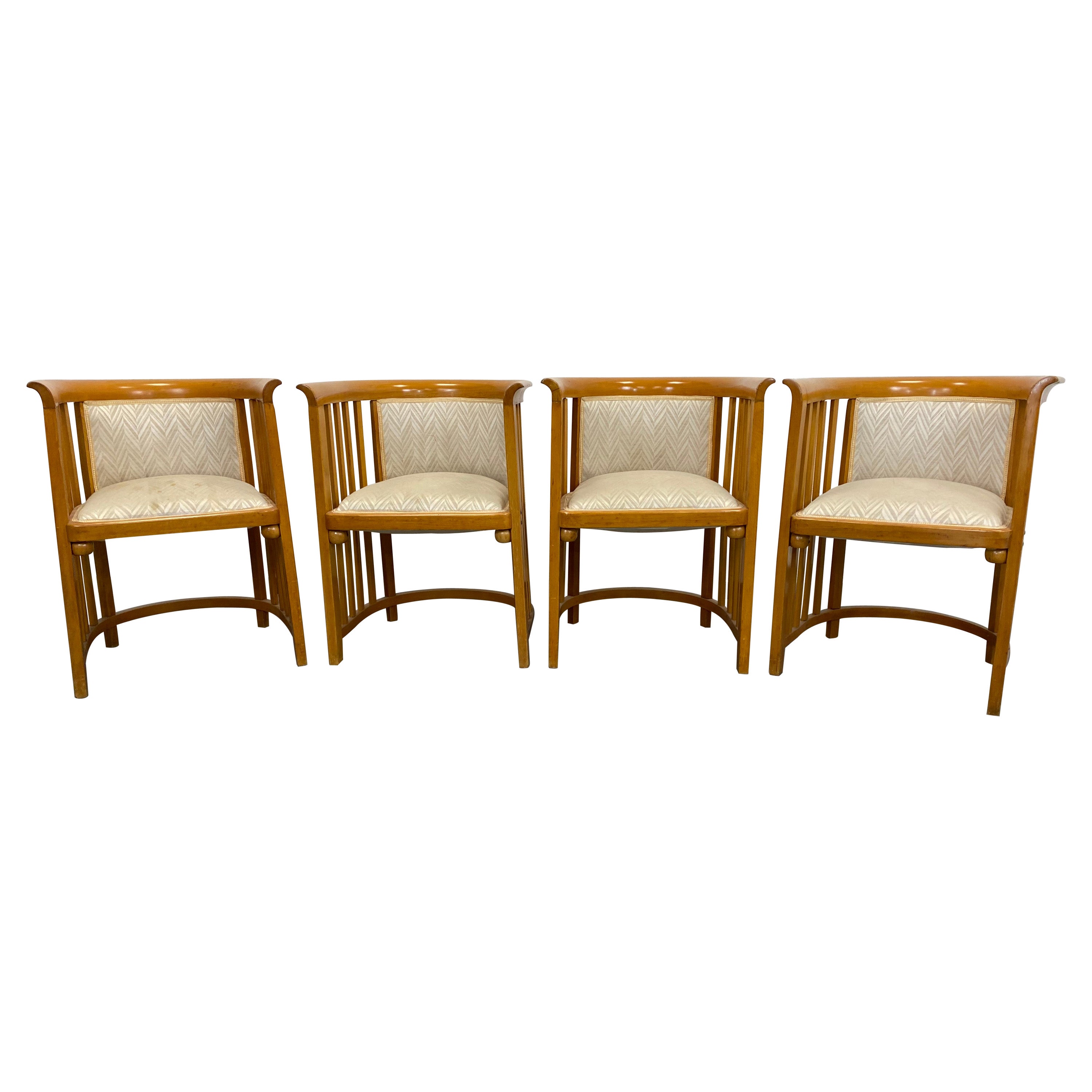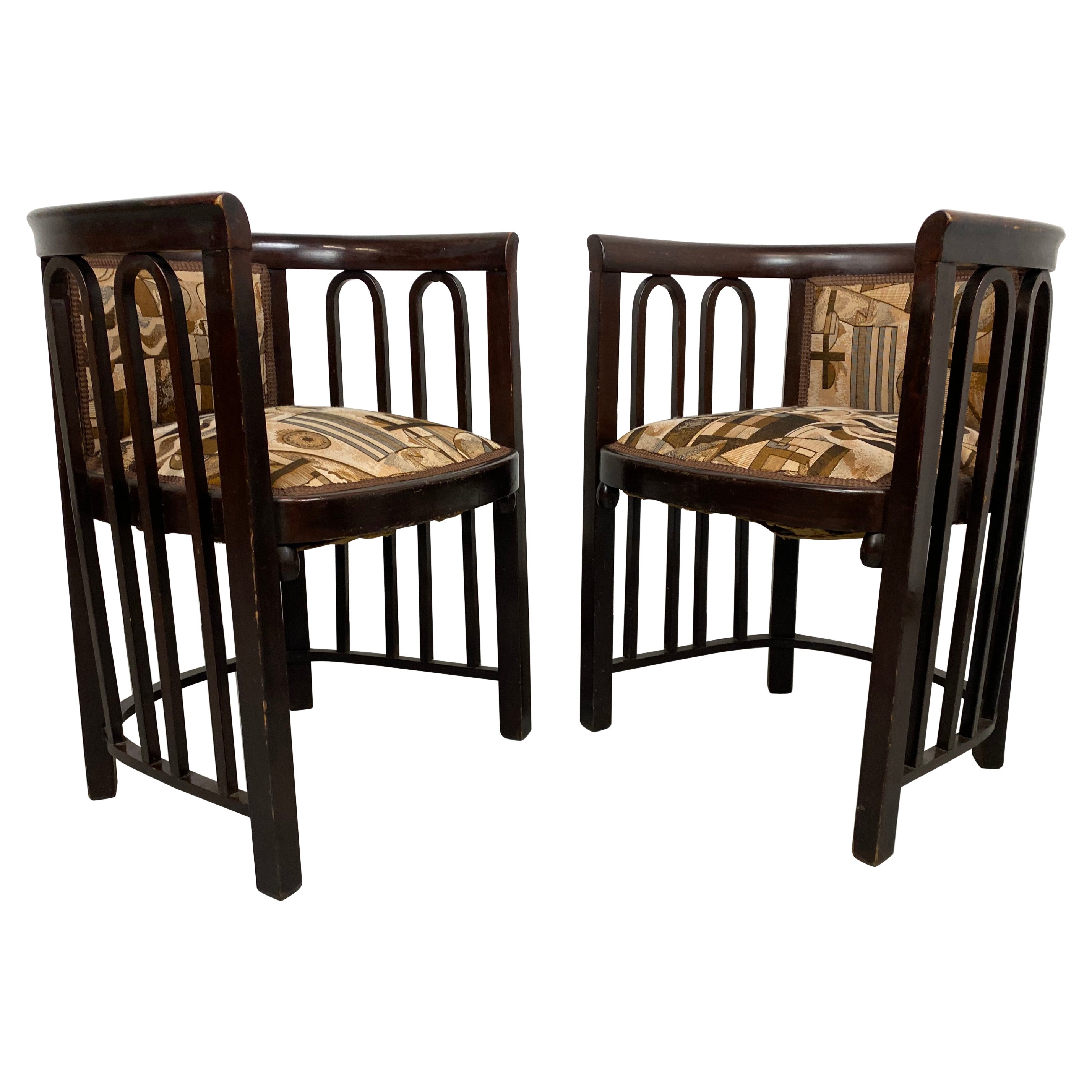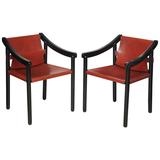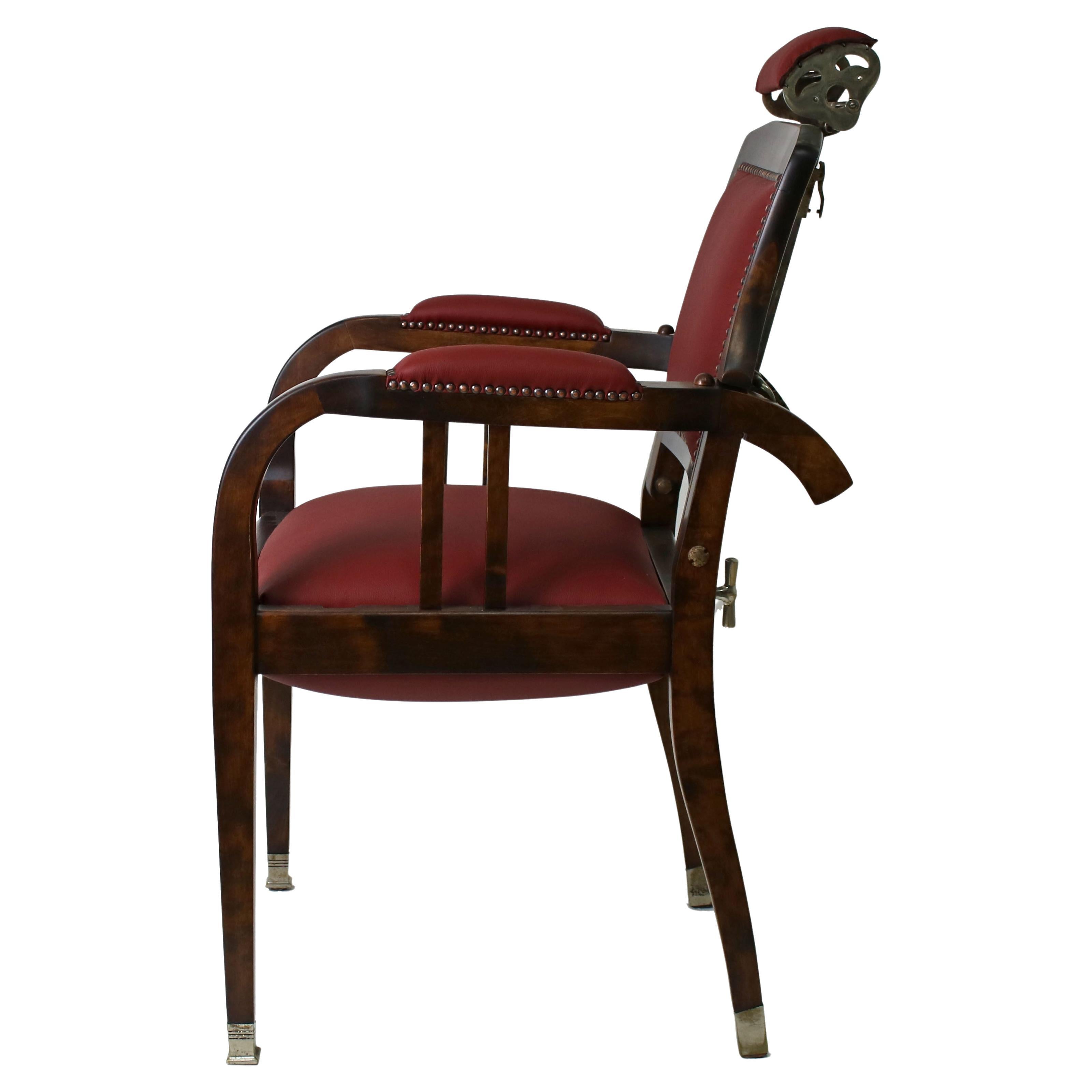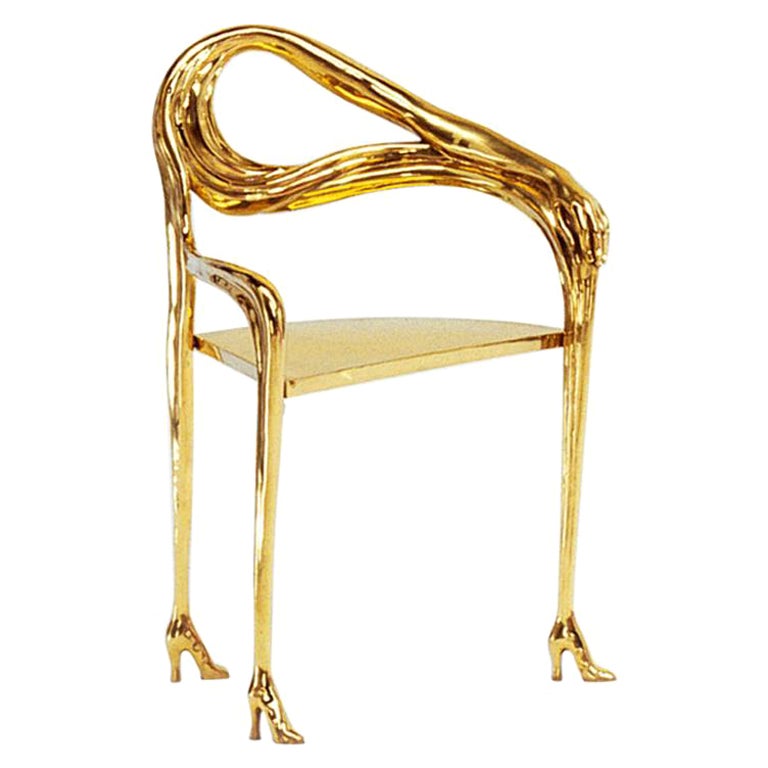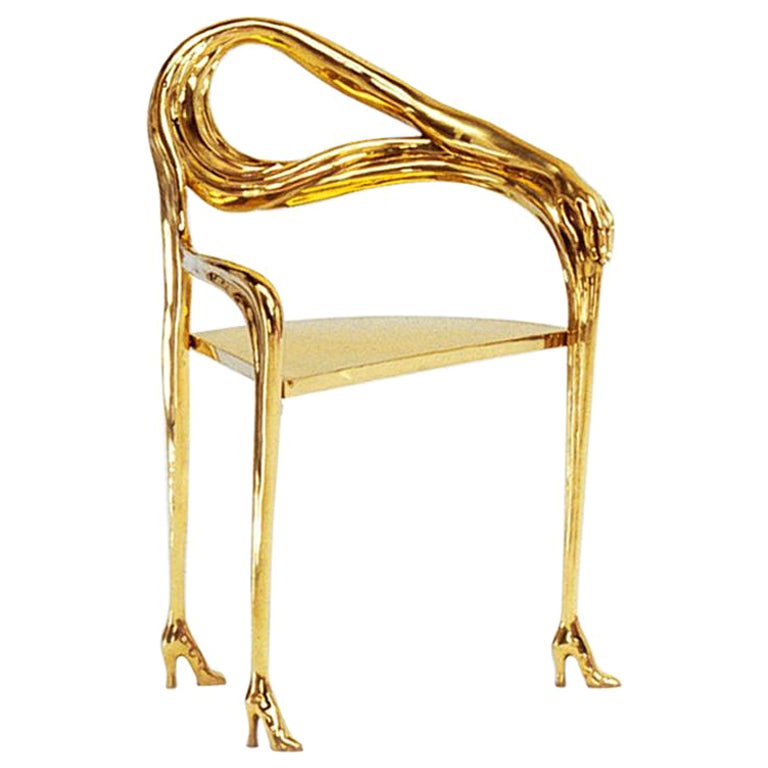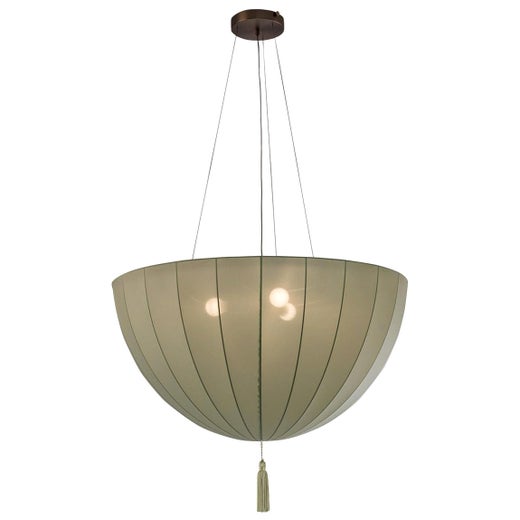Set of 2 Armchairs designed by J. Hoffman, Model No. 423, Early 20th Century
About the Item
- Creator:Josef Hoffmann (Designer)
- Dimensions:Height: 29.53 in (75 cm)Width: 22.05 in (56 cm)Depth: 22.84 in (58 cm)Seat Height: 18.12 in (46 cm)
- Sold As:Set of 2
- Materials and Techniques:
- Place of Origin:
- Period:
- Date of Manufacture:Early 20th Century
- Condition:Reupholstered. Refinished.
- Seller Location:Wrocław, PL
- Reference Number:1stDibs: LU3781135541722
Josef Hoffmann
The Austrian architect Josef Hoffmann was a central figure in the evolution of modern design, and a leader in an aesthetic movement born in Europe in the late 19th century that rejected florid, extravagant ornamentation in favor of a new emphasis on simplicity of line.
As a founder of the Vienna Secession — a union of artists and designers determined to upend Austria’s artistic conservatism — and later, a founder of the turn-of-the-century Wiener Werkstätte (in English: the Viennese Workshops), a design cooperative that produced superbly crafted furniture and housewares, Hoffmann was a pioneering practitioner of what would become a fundamental principle of modernism: that good design is a way of life.
Hoffmann came of age amidst a shift in the culture of the applied arts, as a conservative order that looked only to the past for inspiration was pushed aside. But what, exactly, would replace that order was in question — and Hoffmann’s career embodies the developing patterns of design’s new spirit. His architectural work reflects his time as a student of the Vienna architect Otto Wagner, who disdained excessive decoration and employed new materials such as steel girders and reinforced concrete to create buildings with airy, open interiors full of light.
As a designer of furniture and interiors, Hoffmann was consistently open-minded about the aesthetics he explored. He was an early adherent of the flowing, organic forms of the Art Nouveau design movement that began to flourish in the late 1880s — but by the opening of the Wiener Werkstätte in 1903, Hoffmann’s designs embraced the beauty of geometry in pieces that feature grids and angular forms.
Hoffmann’s greatest works reflect his ability to combine seemingly conflicting design visions into coherent wholes. His architectural masterpiece, the Stoclet Palace in Brussels, has an exterior that groups together simple geometric forms and spacious interiors marked by subtly naturalistic design details that lend rooms an air of charm and geniality.
Hoffmann’s signature furniture design is an adjustable lounge chair — the Sitzmaschine (1905) — that marries a curving frame with square and rectangular back- and side rests. This piece, like so many others by Hoffmann, reflects a groundbreaking, forward-thinking appreciation for the union of different looks and sources that marks the best of interior design in our own day. Moreover, items offered on 1stDibs — which range from enameled silver jewelry, to silver flower vase baskets and other decorative objects, to sofas, lighting pendants and sconces — testify to the astonishing breadth of Hoffman’s creative pursuits. He was truly a giant of design.
- ShippingRetrieving quote...Ships From: Wrocław, Poland
- Return PolicyA return for this item may be initiated within 3 days of delivery.
- Set of 6 Dining Chairs designed by J. Hoffmann, Model No. 811By Josef HoffmannLocated in Wrocław, PolandThis this set of six exquisite dining chairs was crafted by renowned designer Josef Hoffmann and brought to life by the prestigious Thonet brand, however production origin of this pa...Category
Early 20th Century Czech Mid-Century Modern Chairs
MaterialsBentwood
- Early 20th Century Bentwood Bench Settee by J. Hoffmann for Thonet - MundusBy Josef Hoffmann, Thonet-MundusLocated in Wrocław, PolandThis exceptional bentwood bench settee was made in early 20th century and is attributed to Josef Hoffmann designed for Thonet - Mundus. This model appeared in the catalog in 1907, an...Category
Early 20th Century Austrian Vienna Secession Benches
MaterialsBeech, Bentwood
- Apothecary Chest of Drawers, Early 20th CenturyLocated in Wrocław, PolandThis apothecary chest of drawers was made around early 20th century. It is made of oakwood and has been carefully renovated, preserving original patina and traces of time. All surfac...Category
Early 20th Century European Commodes and Chests of Drawers
MaterialsOak
- Dental Cabinet, Early 20th CenturyLocated in Wrocław, PolandThis stunning Dental Cabinet was possibly manufactured in USA by Lee Smith & Sons in Pittsburgh, Pennsylvania. Notable for its distinctive nickel hinges and trim, as well as the iconic swing-out drawers synonymous with Lee Smith & Sons, this piece stands as a testament to an era of unparalleled craftsmanship. The piece is made of solid wood (and is pretty heavy). Adorned with twelve meticulously nickel-plated swing-out drawers, complemented by two discreet blind doors below and two elegant glass doors above, further enhanced by an extendable top this cabinet exudes both functionality and elegance. The piece was gently restored, wooden elements were cleaned and finished with high quality wax, nickeled metal parts remain in beautiful original vintage condition. A very unique and rare treasure that will be an unusual element of any original interior such as loft, barber shop etc. Among traders called the Holy Grail of antique medical furniture...Category
Early 20th Century Unknown Cabinets
MaterialsNickel
- Vitrine, Display Cabinet, Early 20th CenturyLocated in Wrocław, PolandThis beautiful Vitrine comes from former Austro- Hungarian monarchy areas and was made around early 20th Century. It features two storage sections with sliding doors and adjustable s...Category
Early 20th Century European Vitrines
MaterialsOak
- Vitrine, Display Cabinet, Early 20th CenturyLocated in Wrocław, PolandThis beautiful Vitrine comes from former Austro- Hungarian monarchy areas and was made around early 20th Century. It features two storage sections with sliding doors and adjustable s...Category
Early 20th Century European Vitrines
MaterialsOak
- Fledermaus Secession Armchairs No.423By Josef HoffmannLocated in Banská Štiavnica, SKFledermaus secession armchairs no.423 designed by Josef Hoffmann for the Fledermaus Cabaret in 1905. Made by J&J Kohn, beautiful original preservation, stains on two seats.Category
Antique Early 1900s Austrian Vienna Secession Armchairs
MaterialsBeech
- Fledermaus Armchairs No.423 by Josef HoffmannBy Thonet, Josef HoffmannLocated in Banská Štiavnica, SKFledermaus armchairs no.423 by Josef Hoffmann in very good original condition with signs of usage.Category
Antique Early 1900s Austrian Vienna Secession Armchairs
MaterialsFabric, Beech
- Pair of Early 20th Century ArmchairsLocated in New York, NYPair of early 20th century ebonized wood and leather armchairs, downswept arms and straight legs, Italian, circa 1930.Category
Vintage 1930s Armchairs
- Early 20th Century Barber ArmchairLocated in Lučenec, SKThis is a beautiful barber chair manufactured by the German company Busser for Laboratoires Willen, Parfumerie Monréve in Basel, Switzerland. The barber chair is fully functional. Th...Category
Vintage 1920s German Bauhaus Armchairs
MaterialsChrome
- Brass armchair model "Leda" By Salvador Dalí 20th Century Spanish designBy Salvador Dalí, BD Barcelona DesignLocated in Barcelona, ESArmchair model "Leda" Structure in polished cast brass varnish. Salvador Dali Taken from “Femme à tête de roses" (1935)” 1935 (Woman with a head of roses). It was sufficient for this sculpture to be made as a three dimensional piece, remaining faithful to every detail in Dalí’s painting. Dalí affirmed: “A chair can be used even to sit on, but only on one condition: That we sit uncomfortably.” We can sit on the Leda, but due to the fact that it only has three legs and that the chair is heavy, it being made of solid brass, is more a work of art than a functional piece of furniture. © Salvador Dalí, Fundació Gala-Salvador Dalí, Figueres, 2022 Artworks by Salvador Dalí: © Salvador Dalí, Fundació Gala-Salvador Dalí, VEGAP, Barcelona, 2022 Salvador Dalí is the most versatile and prolific artists of the 20th century and the most famous Surrealist. Though chiefly remembered for his painterly output, in the course of his long career he successfully turned to sculpture, printmaking, fashion, advertising, writing, filmmaking and design. Born in Figueres, Catalonia, Dalí received his formal education in fine arts in Madrid. Influenced by Impressionism and the Renaissance masters from a young age, he became increasingly attracted to Cubism and avant-garde movements. He moved closer to Surrealism in the late 1920s and joined the Surrealist group in 1929, soon becoming one of its leading exponents. In the Paris of the 1930s, Dalí surrounded himself with a circle of friends working in the application of art to a number of varied disciplines, beyond the study of purely pictorial art. One of these, Jean-Michel Frank, an acclaimed furniture designer and decorator in Paris at that time, got on extremely well with Dalí, and together they developed a number of ideas. One example of this is the Bracelli lamp, a classic design in Jean-Michel’s manner of designing and working that Dalí adopted for his home in Portlligat. Among Dalí’s projects, which add to his CV as a designer, are the garden furniture for his home in Portlligat, the complete architecture of the Night Club (in the shape of a hedgehog) for the Hotel Presidente in Acapulco (1957) and a project for a bar in California in the 1940s. His creations were not limited to traditional furniture elements, but included taps, handles, knobs, prints and objects of indeterminate use. In 1933, Dalí even registered the patent for the design of a bench as an outdoor seat. In the 1990s, a team of experts led by Oscar Tusquets set out to bring to life the furniture that Dalí had sketched for Jean-Michel Frank, including the Leda chair and low table taken from the 1935 painting “Femme...Category
21st Century and Contemporary Spanish Modern Armchairs
MaterialsBrass
- Armchair model "Leda" By Salvador Dalí Spanish surrealist 20th century designBy Salvador Dalí, BD Barcelona DesignLocated in Barcelona, ESArmchair model "Leda" Structure in polished cast brass varnish. Salvador Dali Taken from “Femme à tête de roses" (1935)” 1935 (Woman with a head of roses). It was sufficient for this sculpture to be made as a three dimensional piece, remaining faithful to every detail in Dalí’s painting. Dalí affirmed: “A chair can be used even to sit on, but only on one condition: That we sit uncomfortably.” We can sit on the Leda, but due to the fact that it only has three legs and that the chair is heavy, it being made of solid brass, is more a work of art than a functional piece of furniture. © Salvador Dalí, Fundació Gala-Salvador Dalí, Figueres, 2022 Artworks by Salvador Dalí: © Salvador Dalí, Fundació Gala-Salvador Dalí, VEGAP, Barcelona, 2022 Salvador Dalí is the most versatile and prolific artists of the 20th century and the most famous Surrealist. Though chiefly remembered for his painterly output, in the course of his long career he successfully turned to sculpture, printmaking, fashion, advertising, writing, filmmaking and design. Born in Figueres, Catalonia, Dalí received his formal education in fine arts in Madrid. Influenced by Impressionism and the Renaissance masters from a young age, he became increasingly attracted to Cubism and avant-garde movements. He moved closer to Surrealism in the late 1920s and joined the Surrealist group in 1929, soon becoming one of its leading exponents. In the Paris of the 1930s, Dalí surrounded himself with a circle of friends working in the application of art to a number of varied disciplines, beyond the study of purely pictorial art. One of these, Jean-Michel Frank, an acclaimed furniture designer and decorator in Paris at that time, got on extremely well with Dalí, and together they developed a number of ideas. One example of this is the Bracelli lamp, a classic design in Jean-Michel’s manner of designing and working that Dalí adopted for his home in Portlligat. Among Dalí’s projects, which add to his CV as a designer, are the garden furniture for his home in Portlligat, the complete architecture of the Night Club (in the shape of a hedgehog) for the Hotel Presidente in Acapulco (1957) and a project for a bar in California in the 1940s. His creations were not limited to traditional furniture elements, but included taps, handles, knobs, prints and objects of indeterminate use. In 1933, Dalí even registered the patent for the design of a bench as an outdoor seat. In the 1990s, a team of experts led by Oscar Tusquets set out to bring to life the furniture that Dalí had sketched for Jean-Michel Frank, including the Leda chair and low table taken from the 1935 painting “Femme...Category
21st Century and Contemporary Spanish Modern Armchairs
MaterialsBrass
